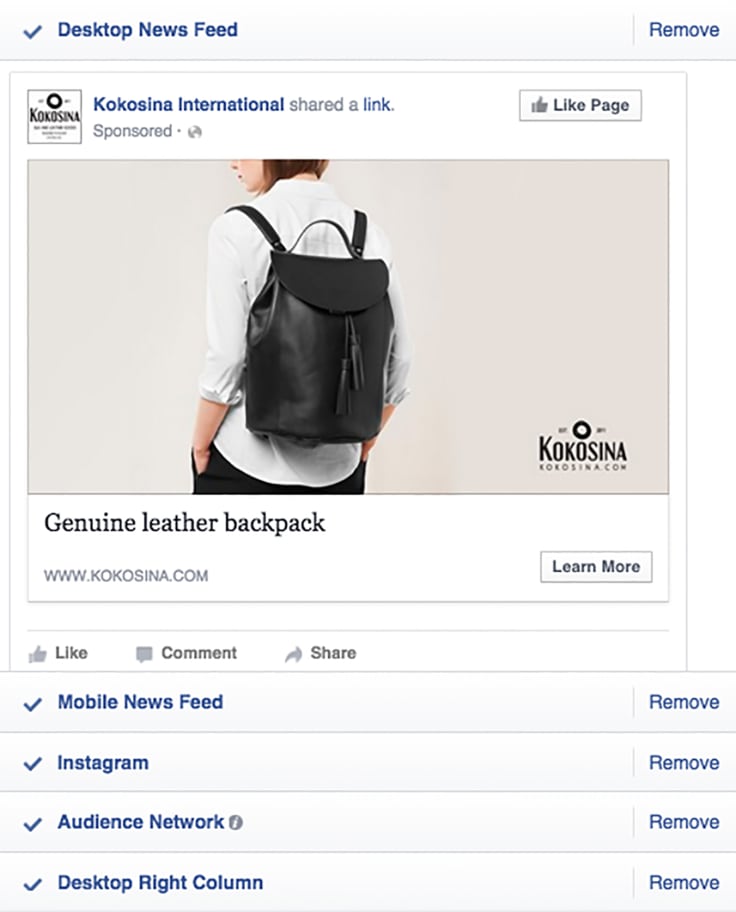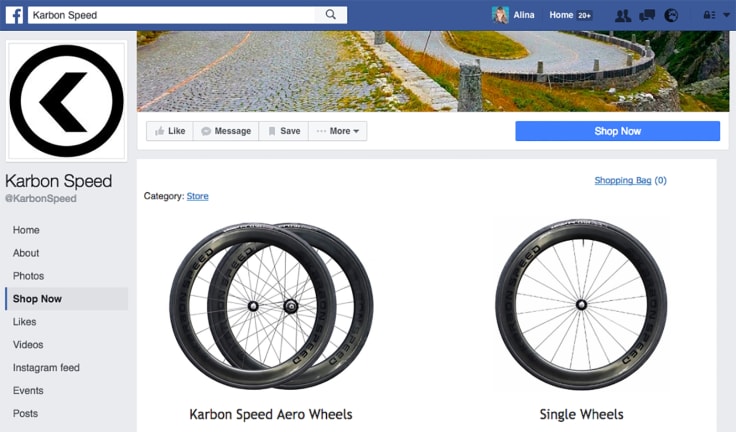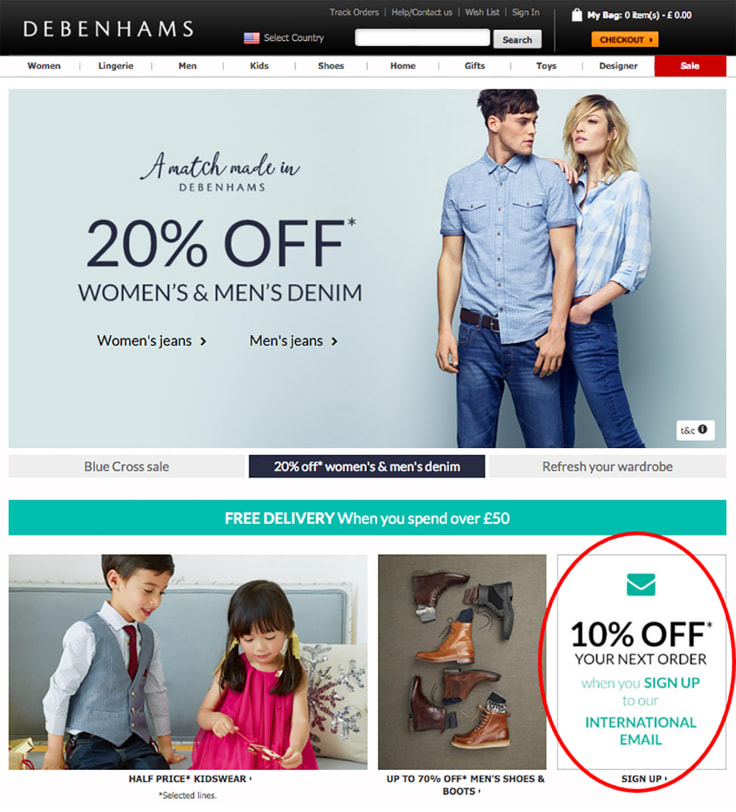Showing top 0 results 0 results found
Showing top 0 results 0 results found


Getting your e-commerce store up and running is just the first step in your entrepreneurial adventure. After that, you must focus on driving sales.
Hopefully, your products will eventually speak for themselves and traction will come organically, but that is often not the case in the very beginning. You’ll have to make moves and push harder than you’ve ever pushed before to get your brand out there.
We’ve compiled ten ways for you to promote your brand and make your first sales through your website. Check them out below!
1. Ask thought leaders to help promote your product
Who better to ask for help than people in your arena who have a wide, engaged audience?
Solicit help from authors, bloggers, speakers, social media personalities, and other content creators active in your field. Don’t be afraid to ask them to help promote your fledgling brand — you’d be surprised how many people want to see others succeed. Use any connections you’ve built in your time as an entrepreneur to get others to carry your message for you, sending more people to your store.
Bloggers Emma and Elsie at A Beautiful Mess partner with clothing stores to do “Sister Style” posts, which show them wearing products they’ve been given as part of a paid advertisement. In these posts, they link to the stores that provided the items, which makes it easy for their blog readers to purchase them, too.

2. Find Facebook communities in your niche
Facebook groups can connect you with like-minded people from around the world who have interesting takes on your ideas, or connections that you can harness in the future.
Join these groups early and become an embedded part of the community, offering insights and participating in topics of conversation. Once your name becomes recognizable in these groups, you can start slowly and unobtrusively promoting your brand (if the page allows it) to others in the group. Even if you aren’t allowed to promote, just having your brand’s name out there is another channel that could lead people to your e-commerce store.
3. Run paid ads on Facebook and Twitter
One of the easiest ways to get your name in front of your customers is through paid advertising. And where better to do so than social media sites like Facebook and Twitter? Paid ads are quick, painless, and can draw significant traffic to your website when they are done well.
Remember to include exciting pictures and a call to action in your ad in order to get the best results.

4. Target like a pro
Facebook and Twitter ads are great, but you can take it to the next level by targeting your ads at groups of people who will find them most relevant and helpful. Widespread scattershot ads can be great for increasing pageviews, but if you’re looking for conversions, then targeting is key.
You can use website retargeting to focus your ad campaigns on people who have visited your website but haven’t completed a purchase. For example, if your target audience consists of older adults, (which we can assume will usually work a conventional 9-5 schedule) you can focus your advertising to display in the evenings when they are sitting comfortably at their house. Facebook and Twitter both offer powerful targeting options, so explore them all before you start paying for ad space!
If your aim is to attract new people, but you want to maximize the chance that the viewer is interested in your ad, use Facebook’s Lookalike Audiences tool. This will find a group of people who are likely to be drawn to your product or business. To do so, go to the Power Editor in your Ads Manager and click Audiences -> Create new audience -> Lookalike Audience.
You might also create a custom audience based on an email list or the people who visit your website. We will create an audience without any additional tools to test this feature.
Tip: before starting a campaign, write a portrait of who your potential customers are. This ensures that you know exactly the type of person you’re attempting to reach.
5. Use social media as a storefront
Yes, you want your customers on your website, but with Ecwid you can even sell your products directly through social media channels like Facebook and Instagram.
Any changes you want to make to your products at your main Ecwid storefront will be instantly synchronized to your social media platforms as well. After all, your customers are already there, browsing, liking, and commenting on everything. So why not add “purchasing your products” to that list?

6. Connect your online store to other marketplaces
Connecting your online store to existing marketplaces like Amazon, Google Shopping, and eBay is a great way to diversify your revenue stream and get your products in front of a much larger pool of shoppers. It can take a little time to set up, but will be well worth it in the long run.
Your e-commerce solution ought to make it a snap — if you’re already using Ecwid, here’s everything you need to know to get set up.
7. Start a newsletter
A newsletter is a great way to keep customers and potential customers abreast of company news, updates, sales, or almost anything! Newsletters accomplish so many things that it seems crazy not to have one!
Your newsletter’s main purpose is to keep your business fresh in the minds of your fans. Your regular communication with them can drive customer engagement, social media followers, store traffic, and your sales. Newsletters can be made quickly and easily through services like MailChimp, and can be set to send automatically at designated times, leaving you free to focus on your business.
8. Start blogging
A blog is a place for you to not only promote new products and to share sale information, but to build relationships with your audience by giving them a behind-the-scenes view of your online operation.
Blogging looks great in the eye of Google; it boosts your SEO, helping organic searches land more visitors on your website. You don’t have to just blog about your products, either. For example, if you sell clothes on your website, your customers will appreciate blog posts about fashion tips and faux pas, even if they don’t always point to your products.
Need an example? Online retailer Ugmonk wrote a blog that showed a product being made from start to finish.

9. Offer promo codes and coupons
Coupons are another awesome way to sell your products. We recommend that you consider a threshold for them as well, so as not to overdo it and find yourself losing money.
For example, offer a 10% discount to customers whose orders reach more than a certain total. It’s important to keep in mind that such discounts are not good for every type of business: if you sell luxury products, coupons may send a weird signal to your customer. Free shipping is a better option in these cases.
And don’t get too enthusiastic about coupons. Customers shouldn’t get used to expecting discounts in your store all the time, otherwise they won’t pay full price for anything.

10. Use a live chat plugin
We’re living in a generation of instant gratification. If we have a question about something, we expect the answer to be immediately googleable. Having a contact form used to be enough, but now you can implement live chat to instantly get in touch with a customer when they reach out to you. It should be of high priority for your shop.
There are a number of Ecwid-compatible options available. Use LiveChat to respond instantly to customers around the world as they type their messages to you. Real-time communication systems like these blow email out of the water.
In conclusion
When you first start your e-commerce store, everything can seem very overwhelming. If you approach it without a plan, it truly will be, so don’t let it happen to you! By understanding social media and adapting your storefronts to the same channels, you can turn those curious visitors into paying customers. A well-done blog or newsletter will keep customers interested in returning to your website.
There are too many things for you to do in the beginning for you to stand still. So what are you waiting for?
Go get busy!
Get a glimpse into the future of business communication with digital natives.
Get the FREE report







Comments